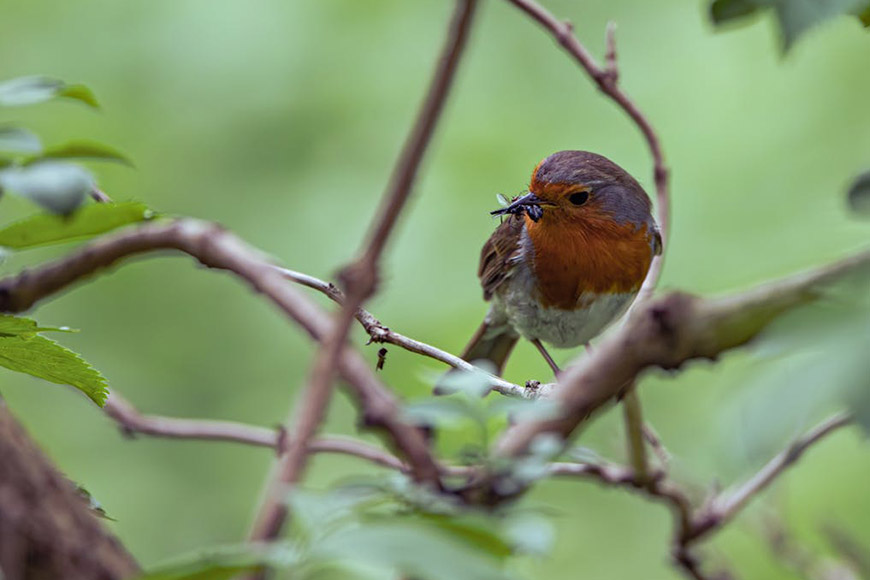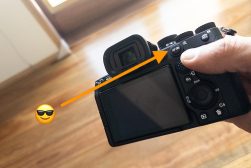
Mastering The Focus and Recompose Photography Technique
Learn the focus and recompose technique in photography to enhance your skills and capture sharp images with perfect composition.
Learn | Photography Guides | By Ana Mireles
Shotkit may earn a commission on affiliate links. Learn more.
Have you ever heard of the focus and recompose photography technique?
This is one of the most common ways for photographers to nail the focus regardless of the composition.
In fact, you’ve probably used this technique even if you haven’t heard about it.
Well, whether this is your first introduction to the technique or you already know it but want to perfect it, this article can help.
Here, I’ll explain the focus and recompose technique and how to use it. I’ll also explain when to use it and when to avoid it.
I’ll also tell you which techniques you can use as an alternative.
So, are you ready to master the focus and recompose technique?
Let’s get started!
What Is the Focus and Recompose Technique?

Credit: LUCIFER91
The focus and recompose technique is a shooting method that allows you to lock focus using the center focus point and move the camera for a better composition.
This allows you to easily achieve sharp focus when the subject isn’t centered without going through the focus point selector.
How to Use the Focus and Recompose Technique
There are a few ways you can implement the focus and recompose technique. Let’s explore them in detail.
The Shutter Button
This is the most common focus and recompose method. You’ve probably already used it at some point without knowing it was a proper photography technique.
By default, most cameras lock the exposure and focus when you press the shutter halfway. Then, you can press the button down fully to take the picture with the focus and exposure information it gathered.
This happens when you’re working in auto-focus mode. It’s used when you have the camera in AF-S (AKA One Shot) autofocus mode.
AF-ON button
By default, most cameras allow you to focus and recompose by half-pressing the shutter button.
However, many photographers prefer to use back button focus. This means that pressing the shutter button no longer activates the autofocus.
Instead, they use a button on the back of the camera to focus. This is called the AF-ON button on Canon cameras, but you may find it with a different name in other brands.
This technique is great for moving subjects, which is why many sports and wildlife photographers typically use it. In this case, you’ll be in AI-Servo (Canon) or AF-C (Nikon).
So, how can you focus and recompose using the back button focus?
If the subject is standing still, simply focus your subject by pressing the AF-ON button and then releasing it.
Now, you can recompose and take the photo without the camera refocusing when you press the shutter button.
How Much Do You REALLY Know About Photography?! 🤔
Test your photography knowledge with this quick quiz!
See how much you really know about photography...

Focusing and recomposing with the back button is also possible if the subject is in motion. In this case, you need to keep the button pressed the entire time.
AF-L button
AF-L stands for AutoFocus Lock. This means that once you’ve focused your subject, the camera will keep it in focus even if you move the camera.
Some cameras, such as Nikon cameras, have the AF-L and AE-L (AutoExposure Lock) together in one button. However, you can go to the menu and choose only one of them.
In Nikon cameras, you can use this button to focus and recompose a photo even when you’re shooting in AF-C mode.
In practice, it would force the camera to behave as if you were in AF-S and you kept the shutter button half-pressed.
Other cameras, like the Fuji ones, have the AE-L and AF-L functions separated into two different buttons. In this case, you can use the half-press shutter button to enable both features.
Now, you can press the AF-L button to keep the locked focus but release the shutter button to adjust the exposure as you move.
When to Use the Focus and Recompose Technique

Credit: Aliaksei Semirski
Most people take photographs with the subject in the center. However, when they start to learn some photography basics, they hear about composition rules.
One of the first composition techniques you learn is the rule of thirds, which tells you to take the subject off the center.
The first time you try this, you might get a final image with a focused background and a blurry subject.
This is because cameras focus, by default, on the center point. This is the most common situation where you need to use the focus and recompose technique.
This situation is a problem that most beginners face. However, it’s something that you’ll encounter even as an experienced photographer.
If you use a single focus point autofocus mode, you need to change the focusing point to change the composition.
To avoid going over the focus points every time, which can be slow and tedious, you can use the focus and recompose technique whenever you don’t want the subject centered in the frame.
It’s also important to mention that this method is great for photographing stationary subjects. It gives you the time to focus, recompose, and take a perfectly sharp image.
If the subject moves slightly – as happens in portrait photography – it’s still OK to use the focus and recompose technique.
Potential Issues When Using Focus and Recompose
As useful as the focus and recompose technique might be, it has its limitations.
The biggest issue you’ll face when focusing and recomposing is that it only works if the subject remains on the same focal plane.
This is why it’s ideal for static subjects. However, it can be used with moving subjects if they’re moving from left to right of the frame or vice versa.
In other words, the subject needs to be moving parallel to the camera sensor because that’s the direction of the focal plane.
However, even if they keep the same focal distance and the focus still fits, the timing might be another issue. If they’re moving too fast, you may not have enough time to recompose before they’re already out of reach.
Also, if the movement changes the distance, meaning they are coming towards you or moving away, you shouldn’t use focus and recompose.
This is because the subject steps out of the focal plane while the camera leaves the focus at the original point. Therefore, the subject won’t be in focus.
A lesser-known issue with the focus and recompose technique is the focus shift when you recompose, which may lead to a soft focus in your images.
When you set the focus, the focal plane and the sensor plane are perfectly aligned. However, when you recompose, you do it by panning.
This shifts the axis of the focal plane so that it’s no longer parallel with the sensor. If you have enough depth of field, this issue is not very noticeable.
However, if you’re using long lenses or wide apertures, which create a shallow depth of field, this may become a bigger issue.
Alternatives to Using the Focus and Recompose Technique
The focus and recompose method is a great way to achieve sharp focus without moving through the focusing points every time.
However, it’s not always the best option. Some situations call for different focusing techniques that will prove more effective.
One alternative to the focus and recompose method is manual focus. You can use this method with the viewfinder or with Live View.
This is the preferred method for macro photography or situations with a very shallow depth of field. To ensure the perfect focus, use it for still subjects and mount the camera on a tripod.
It’s also useful in low-light situations when the autofocus isn’t working.
Another alternative is to use any continuous autofocus mode that your camera offers. On Canon cameras, this is called AI-Servo, and AI-C in Nikon.
This is recommended with fast-moving subjects – especially if they’re moving towards or away from the camera, stepping away from the focus plane. In this mode, the camera will be focusing and recomposing continuously as the subject moves.
If your camera has a tracking mode – which many mirrorless cameras have – this is a good situation to use it.
FAQs on the Focus and Recompose Technique
Can you focus and recompose with back button focus?
Yes, the focus and recompose technique is possible if you’ve changed your focus to the AF-ON or AFL buttons on the back of the camera.
How do you focus and reframe?
First, you need to acquire focus by pressing the shutter button halfway or by pressing the AF-ON button on the back. Then, you can move the camera until you’re satisfied with the framing. Once you like the composition, press the shutter button fully to take the picture.
What does “focus and recompose” mean in photography?
The focus and recompose method in photography is a technique that allows you to use the center autofocus point to focus on your subject and then change the composition without changing the focal point.
What is “back focus”?
Back focus is a focusing mode, which means that you’ve separated the shutter release button from the autofocus feature.
Depending on the brand, this is done by assigning the focus lock to a button in the back of the camera called AF-ON or AFL.
This way, when you press the shutter button to take the picture, the camera won’t try to acquire focus. Many photographers prefer back button focusing over the traditional shutter button.
How do you lock focus and recompose on a Nikon?
To do the focus and recompose method on a Nikon camera, you can half-press the shutter button to focus on the desired focus point. Then, recompose as you like.
You can also do this if you use the back button AE-L/AF-L focusing. This button combines the AutoFocus lock and the auto exposure lock. However, you can assign only the AF-L to it in the settings menu.
Simply press it to focus on the selected AF point and recompose your image.
Do I need to use focus and recompose when my camera has lots of focus points?
Most modern DSLRs and mirrorless cameras feature many autofocus points – and this is certainly an asset. However, sometimes, it’s better to use the focus and recompose method.
Changing focus points continuously to reach a specific point can slow you down and get tedious. Sometimes, it’s simply faster to focus, recompose, and shoot.
Also, not all camera focus points work the same way – at least not in DSLRs. Sometimes, only the center points are cross-type, which ensures a more accurate focus.
Other times, it’s difficult for the camera to understand what should be the main focus point – for example, when you’re taking pictures of a bird between branches. You might end up with an out-of-focus result if you use multiple focus points.

Check out these 8 essential tools to help you succeed as a professional photographer.
Includes limited-time discounts.













